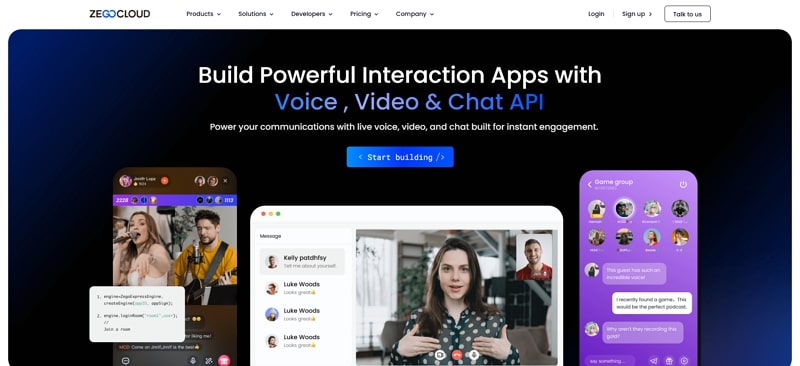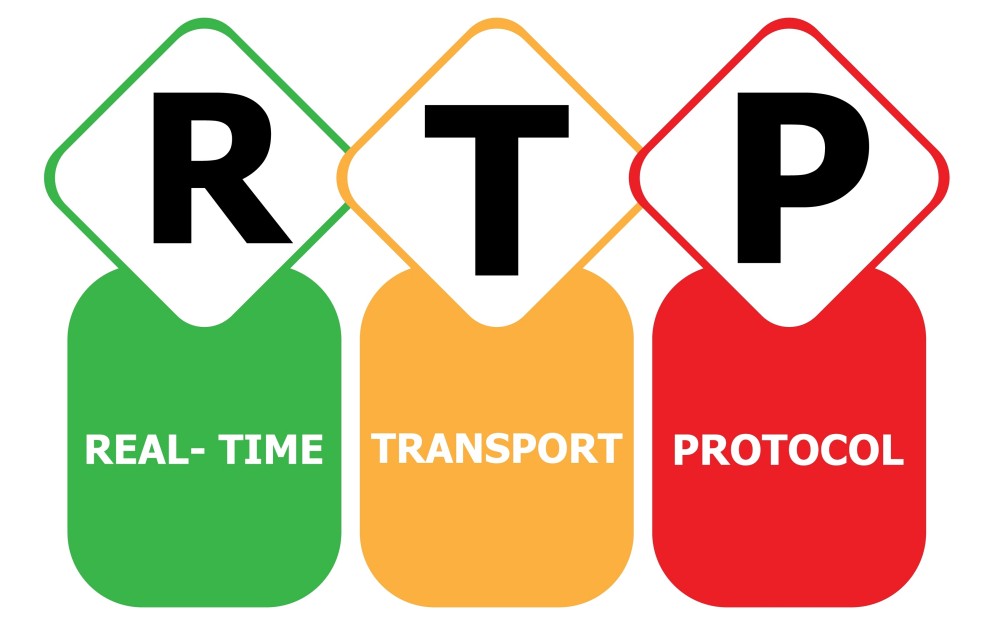The demand for smooth voice and video over the internet is higher than ever today. That’s where the Real-Time Transport Protocol plays a key role in making online calls and meetings clear. It sends audio and video in small parts so the conversation flows without delays or cuts. For more clarification, read this guide that explains what RTP is, how it works, and where it is most useful.
What is the Real-time Transport Protocol (RTP)?
RTP stands for Real-time Transport Protocol, which helps send audio and video online. Moreover, it supports instant communication where sound and pictures must arrive quickly and in the correct order. In addition, the RTP’s meaning becomes clear when we see how it powers smooth calls, meetings, and live events. It was created by the IETF in 1996 and later improved through updates in newer RFCs.
Furthermore, this protocol splits data into small packets, then adds timing and order details to guide their travel. Since the internet may cause delays, missing data, or incorrect orders, RTP manages these problems well. Thus, it sends packets fast and accepts a few losses, so the video or sound keeps playing. You can also use RTP in one-on-one calls or group video chats across different apps and devices.
Key Features of RTP
RTP offers many useful features that help apps smoothly deliver live sound and video over networks. Besides, these features show how RTP in networking handles timing and quality to keep things running without problems. Below, we will explore some key features that it offers to discover the uniqueness of this protocol:
- Data Transfer: RTP sends sound and video without waiting for perfect data, so users get fast and instant results. Moreover, this allows smooth calls or streams even when some parts of the data arrive late or go missing.
- Timing Control: Each packet has a sequence number and timestamp to help keep media in the correct order. Thus, it avoids mix-ups and ensures audio and video stay in sync during calls or broadcasts.
- Jitter Handling: The networking protocol adjusts for delay changes that happen during data travel across different paths. Alongside that, it keeps timing steady so users don’t hear strange sounds or see frozen video frames.
- Codec Flexibility: It can support many audio and video formats like MP3, H.264, or G.711 without fixing one type. In addition, apps can opt for the best decoders for speed, quality, or internet strength.
- Feedback with RTCP: Apart from that, it uses RTCP to get data about call quality, like delay, loss, or user connection strength. Thus, the app can then switch quality levels or fix problems without stopping the live stream.
How Does RTP Work?
To understand how audio and video reach you, look at how the Real Time Transport Protocol RTP handles your data and see what makes it effective:
1. Sequence Number Ensures Packet Order
Basically, it helps track the order of media packets in an RTP stream. In addition, each packet gets a number, which grows by one with every new packet sent. If some are missing, the receiver spots the gap and adjusts effortlessly. Consequently, this keeps things in order and explains the meaning of RTP as a time-sensitive delivery system.
2. SSRC Keeps the Source in Sync
It stands for Synchronization Source Identifier, which gives each stream a unique number to avoid mix-ups when multiple streams exist. Moreover, this helps you keep both audio and video in sync across devices. This number also supports syncing sound with video in the same stream. Alongside that, the RTP meaning here shows how well it handles multiple media types simultaneously.
3. Payload Identification Shows Media Type
Every RTP packet carries a payload type number that tells what kind of audio or video is inside. For example, a code “1” might mean a particular voice format. Thus, when new people join a call, the system can change this type to match their devices. Plus, this keeps the instant and quick transport protocol flexible and compatible.
4. Frame Indicator Marks Boundaries
Beyond the above, RTP adds a frame indicator to show when each frame starts and ends. Moreover, this is helpful for both voice and video by marking specific boundaries. If you hear someone begin to speak or see a scene start, this indicator makes it possible. Besides, it helps the device know where to break and play the next part, making the RTP stream smooth.
how-real-time-transport-protocol-works
5. Timestamp Matches Audio and Video Timing
Each packet comes with a timestamp that marks when the sound or image should play. Even if packets arrive at different speeds, the timestamp keeps everything in sync. Furthermore, this ensures your video and audio match without any issue. Moreover, it helps fight jitters or delays by showing the meaning of RTP as a system that manages time.
6. Contributor ID Detects Multiple Speakers
When more than one person sends audio or video, the contributor identifier shows who sent what. Additionally, it keeps things organized in case a lot of sources join one stream. Plus, the system has the ability to tell apart voices or camera feeds. Even with one device sending both audio and video, it keeps each stream sorted in the instant transport protocol.
Top Applications and Use Cases of the Real-time Transport Protocol (RTP)
RTP supports many services like calling and live TV. When you’ve ever asked what is RTP, it’s the tech that keeps voice and video clear and instant. Thus, this section shows how the protocol helps different apps work fast and without freezing or delay:
1. Clear Internet Calling
RTP is the main tool used in VoIP apps to send voice over the internet quickly and clearly. Moreover, its job is to deliver sounds in order and without gaps, for smooth two-way talking. Alongside that, VoIP apps like WhatsApp or Skype use this specific transport protocol to make things smooth. Therefore, the RTP meaning becomes clear here as it connects voices in real time so that people can talk without delays.
2. Smooth Video Meetings
Video conferencing apps rely on RTP to keep audio and video in sync for clear, live communication. Additionally, it helps send both video and sound at the same time, without stuttering or lag. Besides, the use cases include business meetings, remote education, and online doctor visits. Thus, the Real-Time Transport Protocol is the reason your video calls feel real, even with people thousands of miles away.
3. Live Streaming
As we all know, live streams need fast and stable delivery, and RTP helps keep content flowing with less buffering or stops. It also sends the stream in small parts, so users get steady video without lag. Alongside that, this applies to concerts, sports events, webinars, and breaking news. Beyond that, it even allows creators to reach large audiences without quality drops or playback errors.
4. IPTV Experience
These services depend on RTP to deliver live TV over the internet with real-time quality and timing. In addition, this protocol helps them avoid delays by ensuring the quick delivery of audio and video for TV channels. Some examples include watching live sports, news, or global broadcasts online. This shows the meaning of RTP, a way to bring smooth TV to users who stream instead of using cable.
5. Perfect Video-On-Demand
Some apps, like Netflix and Hulu, use RTP to send content at the right speed and in the correct order. It ensures the video plays without freezing, buffering, or sound issues. Besides, common uses include watching movies, shows, and learning videos. Here, the RTP stream keeps things running well, no matter the device, even if users pause or skip around.
6. Fast-Paced Online Gaming
Online games need split-second updates between players and servers, and RTP delivers those actions without delay. It also allows live moves, sounds, and responses across multiplayer games like Fortnite, FIFA, and racing apps. Furthermore, almost every gamer expects a quick response and no lag, which RTP makes possible. This highlights RTP in networking as a way to keep games fast and fully connected with other players.
How ZEGOCLOUD Uses RTP to Power Real-Time Audio and Video Communication
As we all know, clear and instant communication needs fast delivery and low delays, even on weak networks. This is exactly what ZEGOCLOUD offers by using smart technology in RTP. Basically, it has a WebRTC gateway server that includes a client-side RTC engine to bridge the gap and cater to these needs. Additionally, its Real-Time Transport Protocol helps reduce delays and keep communication stable on both video and voice calls.

RTP handles the core job by breaking voice and video into small pieces and adding order tags. These tags help send content fast, with up to 70% packet loss rate, in the correct order. To reduce wait time, ZEGOCLOUD uses UDP instead of slower methods, along with smart encoding tools. Furthermore, it uses Opus for audio and H.264 for video, giving excellent quality while staying quick and light.
Even on an unstable network, the platform hides the lost data and fixes errors with the help of tools like jitter buffering. Moreover, it watches stream health using RTCP, which checks delays, skipped data, and other issues instantly. Furthermore, it uses Secure RTP (SRTP), which adds safety and encryption to protect users’ data. In short, ZEGOCLOUD amends media quality based on the region and network connection while choosing the best path.
Conclusion
To conclude, RTP helps audio and video move fast over the internet. Moreover, it powers smooth calls, live streams, and online meetings without any delays. Thus, this makes RTP for networking important for the daily apps we use.
Additionally, if you want to build apps with clear voice and video, ZEGOCLOUD is the best option with RTP. It uses smart tools to reduce lag and improve quality, even when your internet is weak.
Read more:
FAQ
Q1: What is the purpose of RTP in real-time communication?
RTP is designed for delivering audio and video over IP networks in real time. It adds sequence numbers and timestamps to data packets, enabling proper synchronization and jitter handling during media playback.
Q2: What’s the difference between RTP and RTCP?
RTP carries media streams (audio/video), while RTCP (RTP Control Protocol) is used for feedback, statistics, and control messages like quality reports and synchronization between streams.
Q3: How is RTP used in WebRTC?
WebRTC uses RTP as its media transport protocol. It wraps media in RTP packets and secures them using DTLS-SRTP, ensuring encrypted peer-to-peer delivery across browsers or native apps.
Let’s Build APP Together
Start building with real-time video, voice & chat SDK for apps today!










